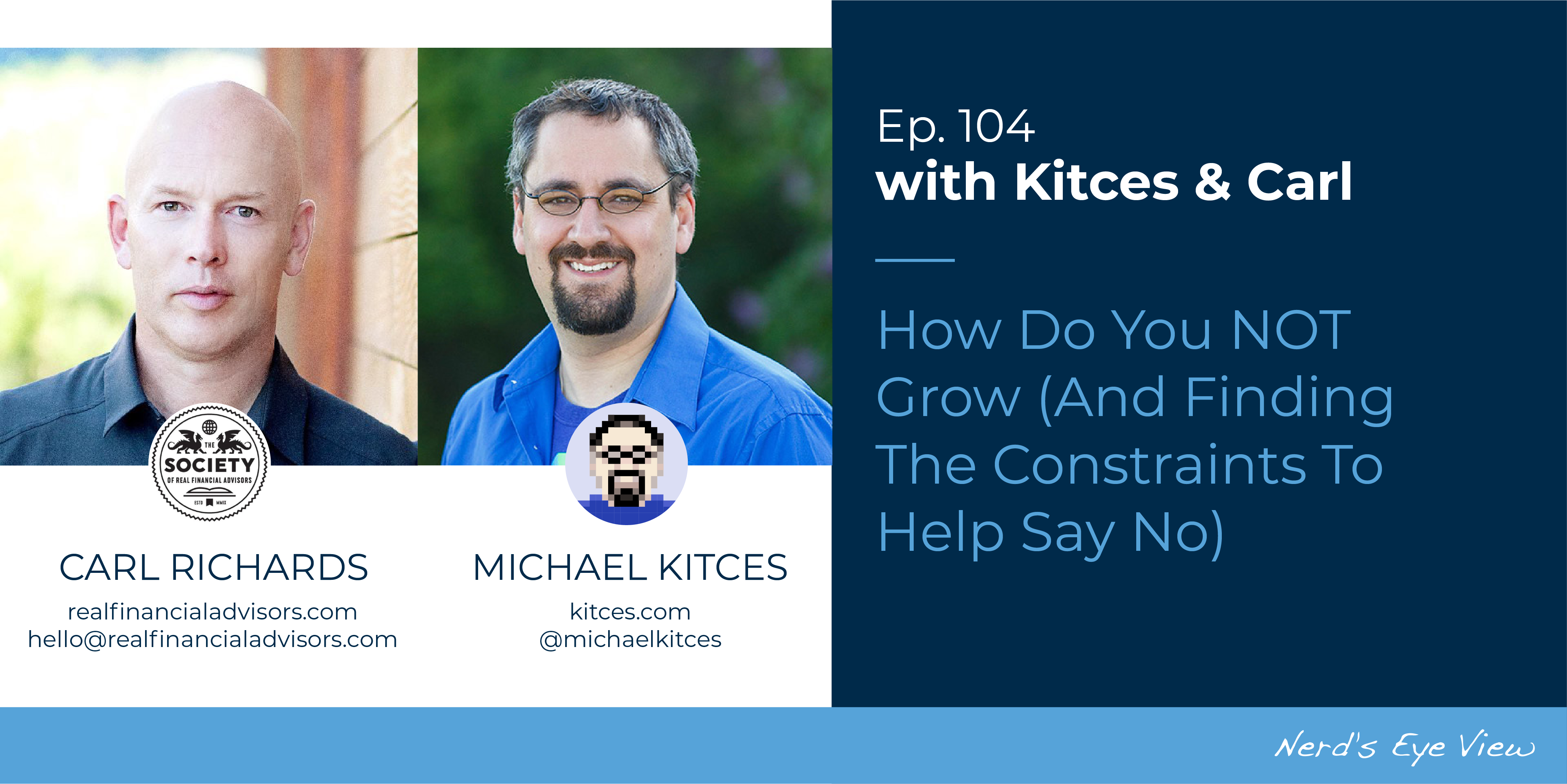For many financial advisory firm owners, growth is often the primary goal in the early years of launching a business. However, at a certain point, initial business growth goals will have been met, leaving the business owner at a crossroads of deciding where to take the business next – should they maintain the firm’s current size or continue the growth trajectory and adapt to the firm’s growing needs to bring on more clients? Even though the business may be doing well, deciding to grow past a certain point can bring on a whole new set of challenges, as with an expanding business, the capacity for advisors and other employees becomes more limited and can strain the firm’s resources. Some advisors, though, may choose not to continue growing the business further, and this choice will inevitably involve the challenging task of saying “no” to future growth opportunities.
In our 104th episode of Kitces & Carl, Michael Kitces and client communication expert Carl Richards discuss how financial advisors can recognize and define what ‘enough’ growth looks like for their firm and how to create limits to help them say “no” to future opportunities that may create unwanted strain on the business.
Advisory firm owners can start by assessing how growth would impact themselves, their employees, and the firm. Typically, growing a firm involves adding more responsibilities, which can create more procedures and processes and requires time, staff capacity, and resources across the firm. To handle these additional responsibilities and projects, firm owners often have to decide whether to delegate tasks, automate them, save them for later, or refuse them altogether. And for many advisors who choose to keep their teams smaller and are not interested in hiring and training more employees, determining when to reject new opportunities and how to communicate their choice can be key to finding and maintaining their desired balance. This is because some advisors may not want to take on new clients and additional projects that may overload staff and take away time that could otherwise be spent on keeping current clients happy. Whatever the constraints may be, understanding when – and why – to stop growing can help advisors learn how to say no to unnecessary opportunities that may cause unwanted growth and strain on the firm, staff, and resources.
Ultimately, the key point is that while saying no to growth can feel scary (because we sometimes tend to fear that not continuously striving for growth and staying busy will somehow lead to inevitable failure), protecting the time, capacity, and resources of the firm by turning down unnecessary opportunities can be the best thing for the firm whose goals don’t involve growth. And by defining – and honoring! – the firm’s constraints, the process of intentionally declining these opportunities can become easier and more efficient (e.g., through automated processes and templates to respond to such opportunities). Over time, respecting the constraints of the firm can help the firm owner and the team make better choices and even open up new opportunities that are more relevant to the firm’s future direction, offering a positive impact on the overall goals of the business!


